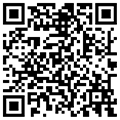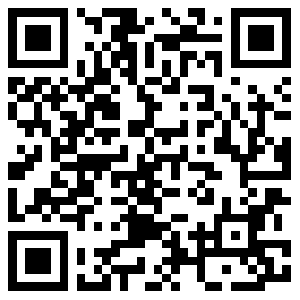瘢痕疙瘩皮肤科医生怎么治?
2022年04月25日 8337人阅读 返回文章列表
我们以前说过,瘢痕疙瘩是常见病,大约5-10%的人群发病。那么,到底什么是瘢痕疙瘩?由什么原因引起的?皮肤科有哪些特色诊疗方法?让我们一起来看看吧~
We've covered before that keloid is a common disease affecting approximately 5-10% people in the world. So, what is a keloid? What causes it and how to treat it? Let's look at it together.
什么是瘢痕疙瘩?
What is a keloid?
瘢痕疙瘩可以称为良性纤维增生性肿瘤,可由易感个体因任何皮肤创伤发生,有时无创伤也可产生。 它们是扩大的,凸起的疤痕,可以是粉红色、红色、肤色或比周围皮肤更暗。 通常质地比较硬,表面光滑、有光泽,无毛。 瘢痕疙瘩可在皮肤受伤后3-4周内出现,也可能需要一年或更长时间才能出现。 它可能会持续增长数月或数年,扩大到原始皮肤损伤的边缘。它们对患者可能有功能,外观或心理社会上的影响。
瘢痕疙瘩组织延伸超出边缘,其特征是:
- 可以在非常轻微的皮肤损伤后发展,例如痤疮,或者有时对皮肤没有任何明显的创伤时发生(自发性瘢痕疙瘩)。
- 超出原始皮肤损伤区域。
- 可能不会自然消退。
Keloids are benign fibroproliferative tumors that occur as a response to any kind of injury to the skin of susceptible individuals, or may even develop without known injuries. They are enlarged, raised scars and can be pink, red, skin-coloured or darker than the surrounding skin. They usually feel firm and smooth. They are shiny and hairless. A keloid can appear within 3-4 weeks of a skin wound but can take a year or longer to appear. It may continue to grow for months or years, enlarging beyond the edges of the original skin damage. They have a functional, aesthetic, or psychosocial impact on patients, as highlighted by quality-of-life studies. Keloid tissue extends beyond the margins and are characterized by:
-Can develop after very minor skin damage, such as an acne spot, or sometimes without any obvious trauma to the skin (spontaneous keloids).
-Spread beyond the original area of skin damage.
-May be permanent.
瘢痕疙瘩的症状是怎么样的?
What are the symptoms of a keloid?
当瘢痕疙瘩生长时,通常可能会发痒,刺痛和/或疼痛。 一旦它们停止生长,通常没有不适。 但是,如果它们位于关节上方或附近,则可能会使患者活动受限。
While keloids are growing, they may feel itchy, prickly and/or sore. Once they have stopped growing there is usually no discomfort. However, If they are located over or near a joint, movement may be restricted.
瘢痕疙瘩的病因是什么?
What causes keloids?
瘢痕疙瘩产生的确切原因尚不完全清楚,但可能由于胶原蛋白过量产生(皮肤的结构蛋白)而发生瘢痕疙瘩。
有一些风险因素会增加一个人患瘢痕疙瘩的可能性:
√ 瘢痕疙瘩可以影响任何人,但在肤色较深的人(尤其是非洲人,西班牙裔或中国血统的人)中更常见
√ 上胸部,胸骨(胸骨),肩部,下巴,颈部,小腿和耳垂(特别是耳朵穿孔后)皮肤损伤后更常见
√ 最有可能形成以下烧伤,痤疮疤痕和受伤感染或在愈合时处于紧张状态的伤口
√ 可能由手术疤痕发展而来
√ 如果皮肤再次受损,更有可能影响以前患有瘢痕疙瘩的人
√ 最常见于青春期和30岁之间
√ 怀孕期间可能出现或扩大
The exact cause is not completely understood, but keloids occur due to the over production of collagen (the skin’s structural protein). There are some risk factors that increase the likelihood of a person to develop Keloid scars:
√ can affect anyone, but are more common in people with darker skin (especially those of African, Hispanic or Chinese descent)
√ more common after skin injury on the upper chest, breastbone (sternum), shoulders, chin, neck, lower legs and earlobes (especially after ear piercing)
√ most likely to form following burns, acne scars and wounds that become infected or are under tension whilst healing
√ may develop from surgical scars
√ are more likely to affect people who have previously had a keloid if their skin is damaged again
√ Most commonly arise between puberty and 30 years of age
√ may appear or enlarge during pregnancy
皮肤科特色的瘢痕疙瘩治疗方式是什么?
What are the treament options in dermatology practice for keloids?
药物治疗
√ 最常见的治疗方法是在瘢痕疙瘩中注射糖皮质激素,即病灶内曲安奈德或倍他米松注射,常每2-3周注射一次。然而,过量使用类固醇可以使皮肤变薄,脆弱和苍白,单用复发几率达50%。因此,我们常将曲安奈德与抗肿瘤药物5-氟尿嘧啶或博莱霉素合用注射,可以大大降低复发几率。
√ 有机硅敷料(如美皮护)或凝胶(如芭克)是安全的。长期使用可以减少瘢痕厚度,并且使瘢痕颜色变浅。
√ 加压疗法,及使用绷带或器械(如耳夹)压迫瘢痕组织长期使用有一定疗效,特别是当瘢痕疙瘩位于耳垂和躯干上时。
√ 激光治疗可以起到封闭瘢痕疙瘩血管的作用,但是仅作用于表面,因此常在局部注射药物治疗、瘢痕疙瘩变平后运用。
Medical therapy
The most common treatment is the Injection of a steroid into the keloids i.e. intralesional triamcinolone (ILT) injection, and can be repeated every 2-3 months. However, steroids can make the skin thin, fragile and pale and have an up to 50% chance of growing back. So It is often combined with anti-cancer drugs 5-fluorouracil (5-FU) or bleomycin. This combination can drastically decrease relapse rate.
√ Silicone dressings(i.e. mepiform) or gel(i.e. kelo cote) are safe and can be bought from a pharmacist without prescription. If used for several months they can reducing the thickness and make the keloid paler.
√ Compression with bandages or devices (such as clips or splints) may sometimes help, particularly when located on the earlobe and the torso.
√ Laser therapy can help close up the vessels, especially if combined with intralesional injection therapy.
外科治疗
若仅手术切除瘢痕疙瘩,复发率达90%。因此术后需联合浅层放射治疗或同位素敷贴治疗以预防复发。
Surgical therapy
Excision combined with superfacial radiotherapy
Excision of the keloid can be used as a monotherapy has about 90% relapse rate. Thus it needs to be employed in combination with superfacial radiotherapy or isotope patches.
张江林教授在瘢痕疙瘩的综合治疗方面有丰富的经验。得了瘢痕疙瘩,莫惊慌,张江林教授团队为您保驾护航!
Professor Jianglin Zhang is highly experienced in the comprehensive management of keloids.
If you have If you have it, don't panic! Prof
Zhang's team can help you get rid of it!

 浙公网安备
33010902000463号
浙公网安备
33010902000463号



